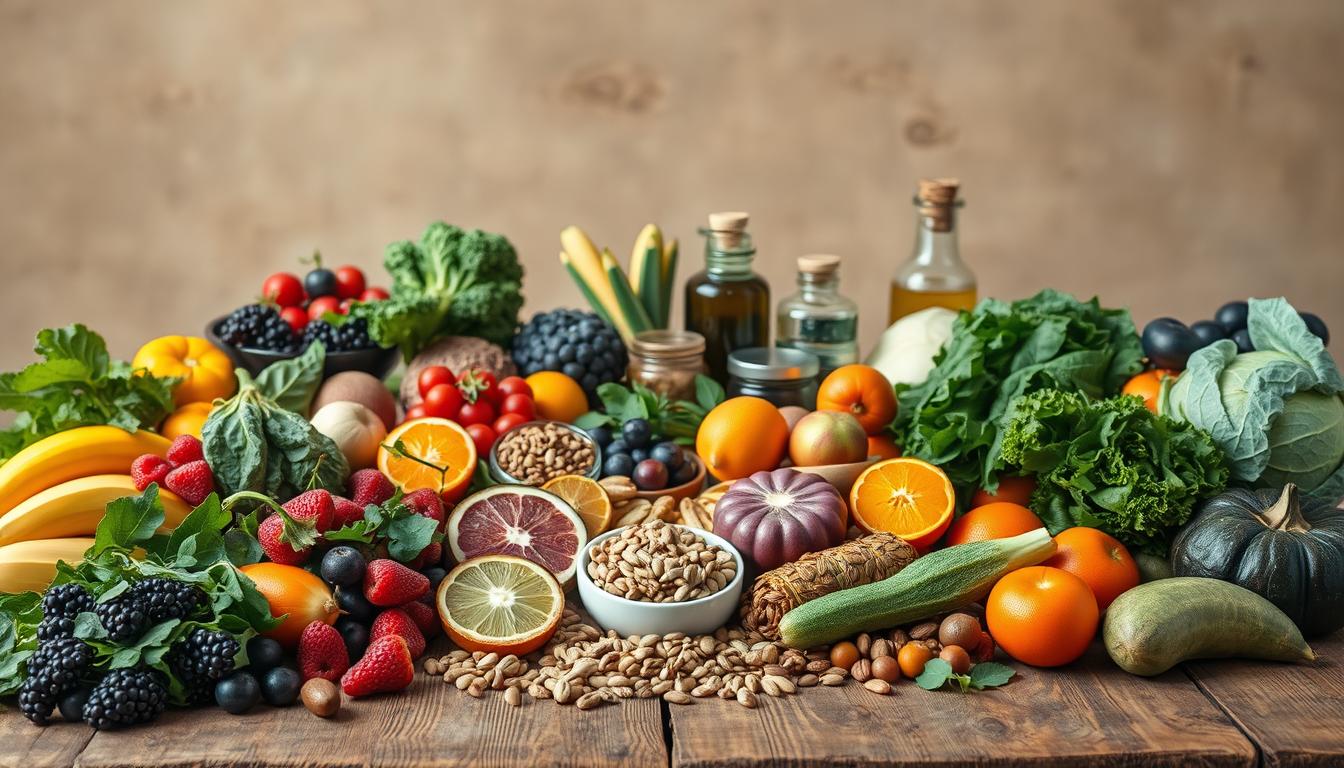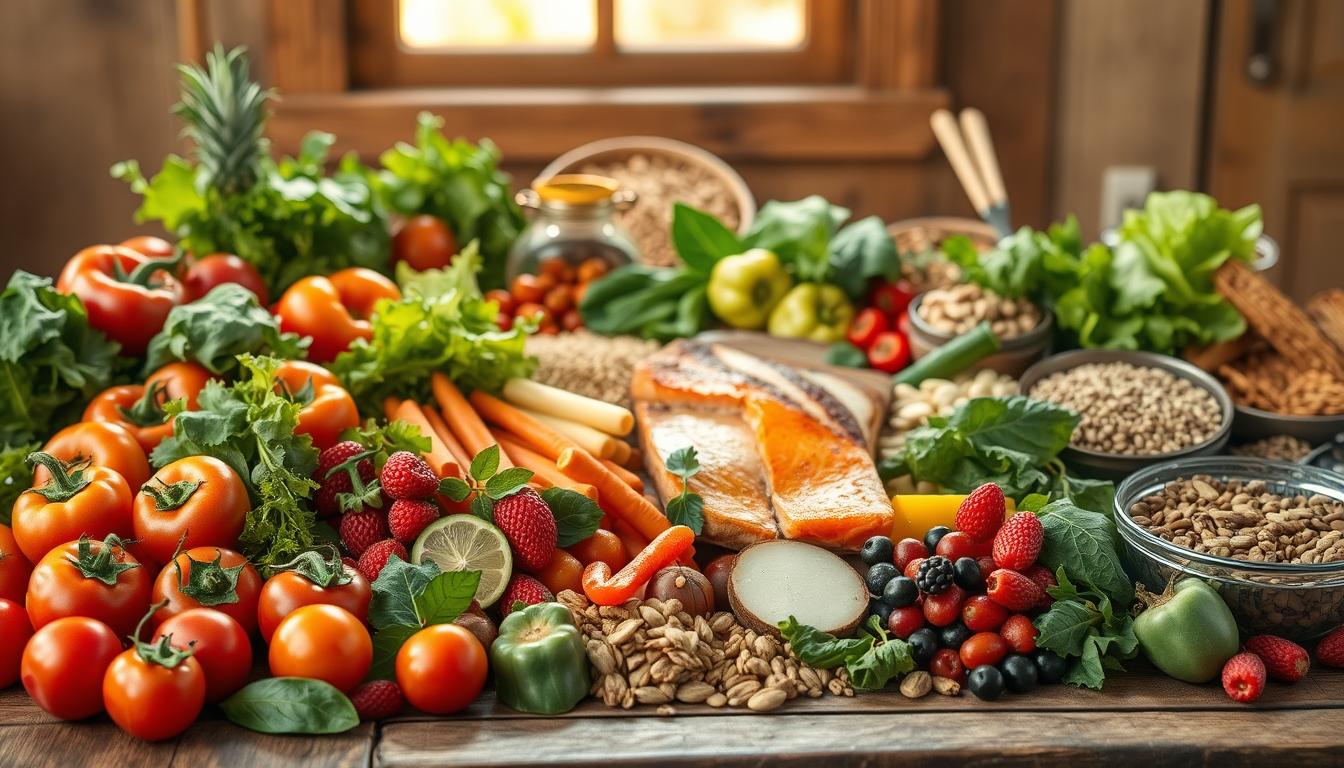Category
Recent Posts
Recent Comments
Archives
Shop Categories
-
 Baby & Maternity22 products
Baby & Maternity22 products -
 Beauty & Health22 products
Beauty & Health22 products -
 Books & Media22 products
Books & Media22 products -
 Cell Phones & Accessories11 product
Cell Phones & Accessories11 product -
 Colors11 product
Colors11 product -
 Digital Products22 products
Digital Products22 products -
 Featured44 products
Featured44 products -
 Fun11 product
Fun11 product -
 Health & Household33 products
Health & Household33 products -
 Jewelry & Accessories22 products
Jewelry & Accessories22 products -
 Kids' Fashion11 product
Kids' Fashion11 product -
 Preschool Learning11 product
Preschool Learning11 product -
 Sports & Outdoors33 products
Sports & Outdoors33 products -
 Toys & Games22 products
Toys & Games22 products -
 Most Popular66 products
Most Popular66 products -
 New Arrival55 products
New Arrival55 products -
 On Sale77 products
On Sale77 products
Popular
-
 Free Parenting Journey Planner: Doctor Visits & Baby Prep
Free Parenting Journey Planner: Doctor Visits & Baby Prep
5.00 $Original price was: 5.00 $.0.00 $Current price is: 0.00 $. -
 Top 10 Preschool Coloring Book Bundle
Top 10 Preschool Coloring Book Bundle
50.00 $Original price was: 50.00 $.14.99 $Current price is: 14.99 $. -
 86pcs/set Elegant Retro Earrings, Multi-layer Necklace, Earrings, Rings, Four-in-one Multi-piece Jewelry Set for Women, Ideal for Daily Outing, Commuting, Mother's Day, Valentine's Day Gifts, No Box
Rated 5.00 out of 5
86pcs/set Elegant Retro Earrings, Multi-layer Necklace, Earrings, Rings, Four-in-one Multi-piece Jewelry Set for Women, Ideal for Daily Outing, Commuting, Mother's Day, Valentine's Day Gifts, No Box
Rated 5.00 out of 514.99 $Original price was: 14.99 $.4.17 $Current price is: 4.17 $. -
 Smiling in the Sky Kite with Free Flying String - Durable Polyester, Mixed Colors, Perfect for Outdoor Fun
Rated 5.00 out of 5
Smiling in the Sky Kite with Free Flying String - Durable Polyester, Mixed Colors, Perfect for Outdoor Fun
Rated 5.00 out of 56.99 $Original price was: 6.99 $.1.35 $Current price is: 1.35 $. -
 Chic Girls' Summer Outfit Set: Strawberry Embroidered Off-Shoulder Top & Heart Belted Shorts - Breathable Polyester, Machine Washable, Perfect for Outdoor
Rated 5.00 out of 5
Chic Girls' Summer Outfit Set: Strawberry Embroidered Off-Shoulder Top & Heart Belted Shorts - Breathable Polyester, Machine Washable, Perfect for Outdoor
Rated 5.00 out of 519.89 $Original price was: 19.89 $.6.39 $Current price is: 6.39 $. -
 1pc Frameless Oversized Gradient Fashion Glasses for Women, Polygonal Metal Hinge, PC Lens, Fashionable UV Protection Eyewear for Outdoor Activities
Rated 5.00 out of 5
1pc Frameless Oversized Gradient Fashion Glasses for Women, Polygonal Metal Hinge, PC Lens, Fashionable UV Protection Eyewear for Outdoor Activities
Rated 5.00 out of 53.47 $Original price was: 3.47 $.2.05 $Current price is: 2.05 $.
Tag Clouds

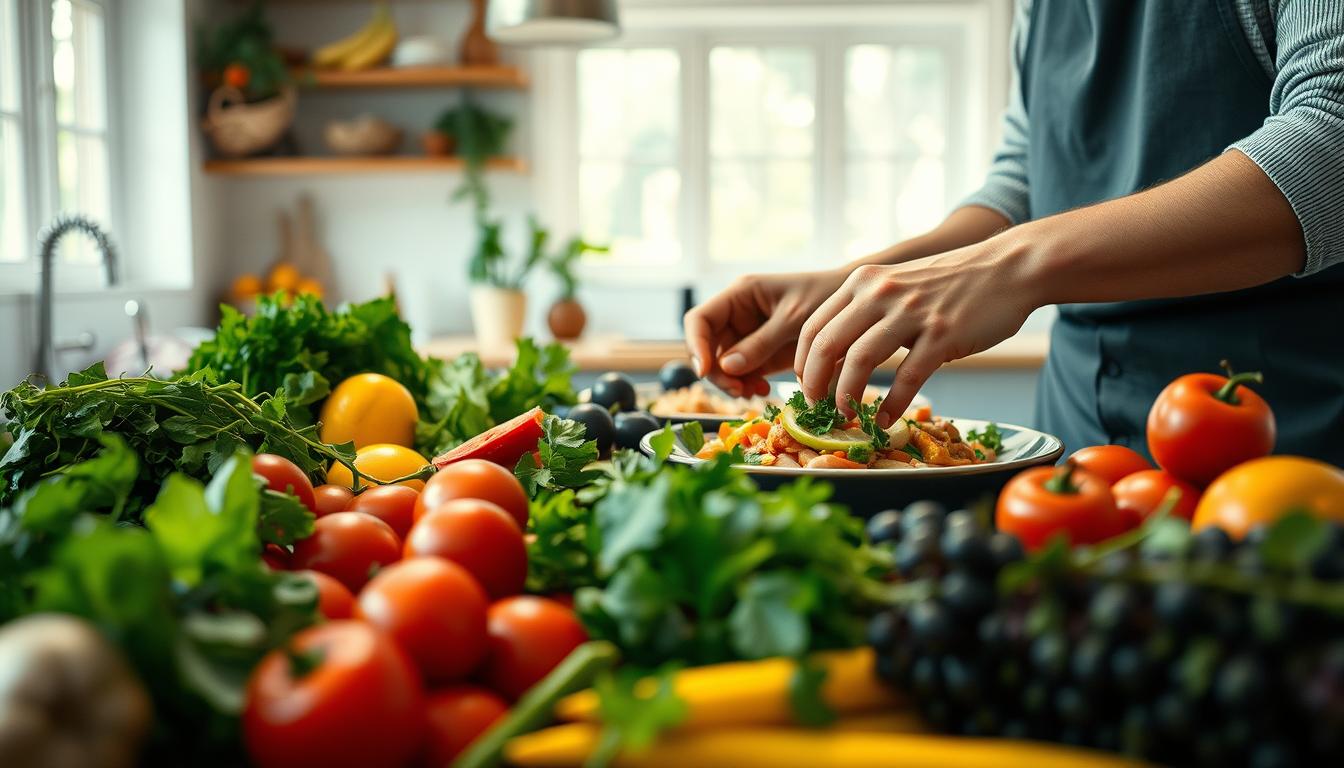
Have you thought about how cooking affects your health? It’s not just about picking the best ingredients. How you cook matters a lot too. Cooking right can make your food much healthier.
This article will share tips on cooking that boost nutrition. You’ll learn how different cooking ways keep vitamins and minerals in your food. This means every bite can be full of good stuff.
- Cooking techniques can enhance or diminish nutrient retention.
- Fresh ingredients significantly contribute to a nutritious diet.
- Understanding food preparation can lead to healthier meals.
- Maximizing nutrition is achievable with the right cooking methods.
- Healthy cooking promotes overall well-being.
The Importance of Nutrition in Cooking
Nutrition is very important in cooking. It helps us make meals that taste good and are good for our bodies. By choosing healthy foods, we keep important nutrients in our meals.
Knowing how cooking affects our food is key to good health. Bad cooking methods can lose a lot of nutrients. But, using whole foods and nutrient-rich ingredients makes our meals better and healthier.
Cooking for Nutrition: Maximizing the Goodness in Every Bite
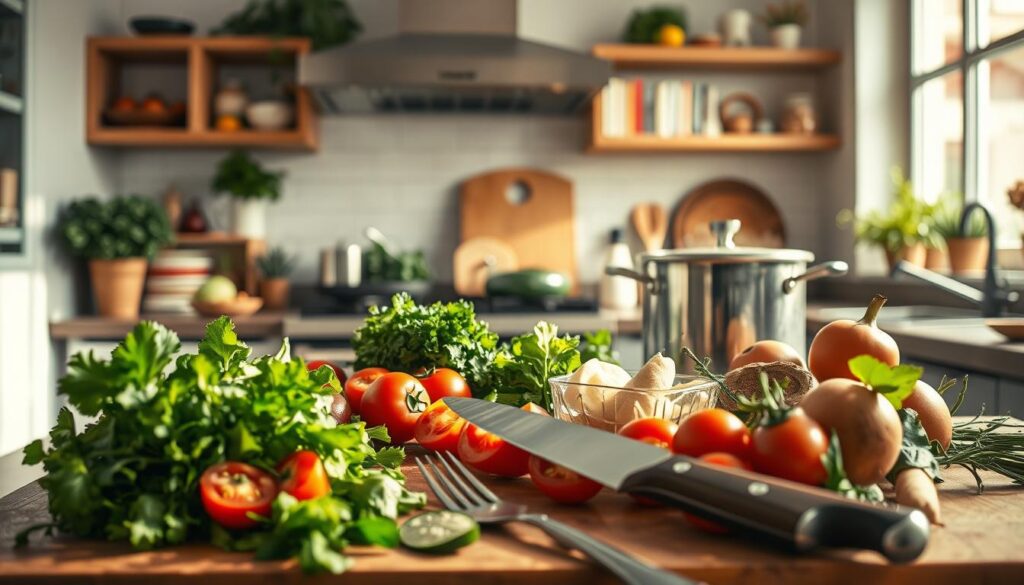
When you cook, aim to get the most from each ingredient. Knowing how cooking affects nutrients is important. For example, steam your veggies instead of boiling them.
This keeps more vitamins and minerals in your food. Your meals will be super nutritious.
Adding healthy recipes to your meals can change how you see food. Choose dishes that are tasty and full of good stuff. Make sure to include leafy greens, whole grains, and lean proteins often.
Try different ways to cook like roasting or grilling. You’ll find new tastes and keep your food healthy.
How you cook affects your health a lot. Pick fresh ingredients and use healthy fats wisely. Small changes can make a big difference in your health.
Start cooking with nutrition in mind. You’ll feel good knowing you’re eating well. Enjoy every bite!
Healthy Cooking Techniques
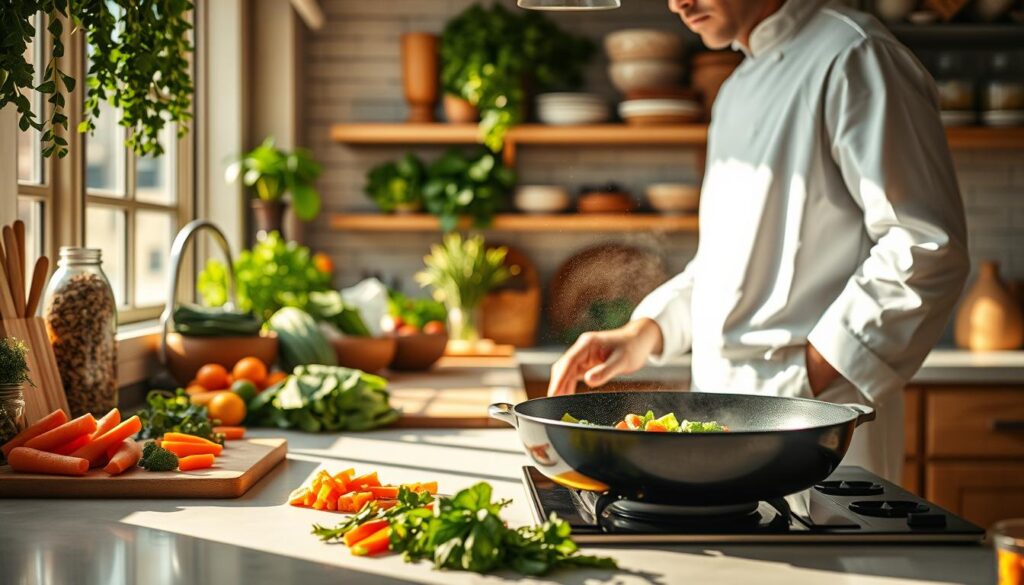
Learning about healthy cooking can make your meals better. Methods like steaming, stir-frying, and roasting keep food tasty and full of nutrients. They cook food fast and use low heat.
Steaming keeps food moist and full of nutrients without extra oil. Stir-frying cooks quickly, keeping flavors and textures fresh. Roasting makes food taste better and keeps nutrients in.
But boiling can lose nutrients. It’s important to choose cooking methods that keep food healthy and tasty.
- Steaming: Great for veggies and fish, keeping them colorful and nutritious.
- Stir-frying: Fast and flavorful for many foods, bringing out great tastes.
- Roasting: Best for deep flavors in veggies and proteins.
Incorporating Fresh Ingredients for Nutrition
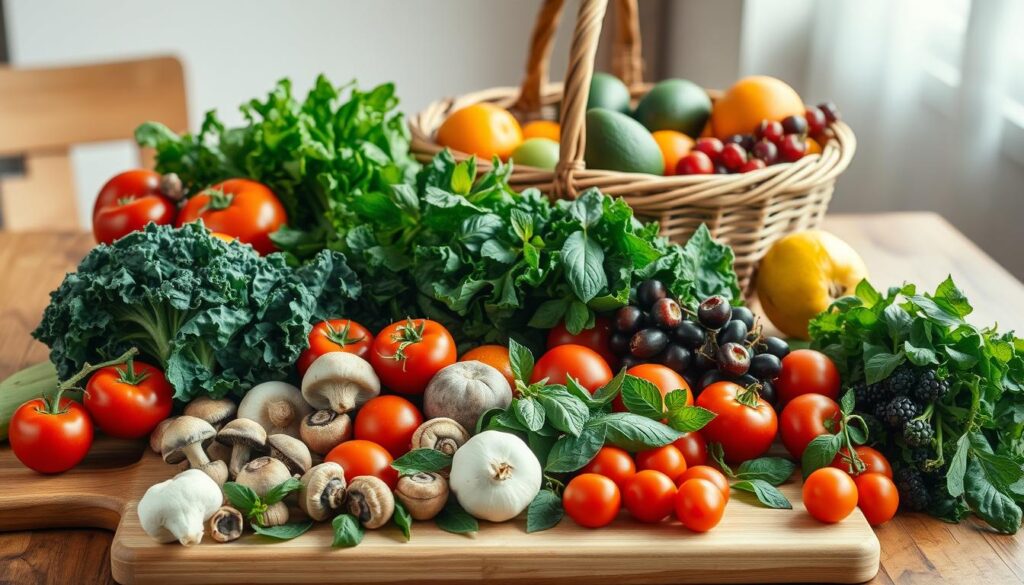
Adding fresh ingredients to your meals makes them healthier and tastier. Fresh fruits, whole grains, and good proteins are key. They give you important vitamins and minerals.
Choosing seasonal and local foods is smart. It’s good for your health and helps local businesses. You get great taste without losing nutrition.
Here are some tips for cooking with fresh ingredients:
- Always aim for a colorful plate. Different colors usually signify various nutrients.
- Experiment with herbs and spices to elevate the flavors of your dishes while keeping them healthy.
- Incorporate a variety of fruits and vegetables in your meals to ensure a wide range of nutrients.
Using fresh ingredients is all about cooking for wellness. Your meals will be healthier and more fun to make. You’ll enjoy making tasty and vibrant dishes every day.
Cooking Tips for Health
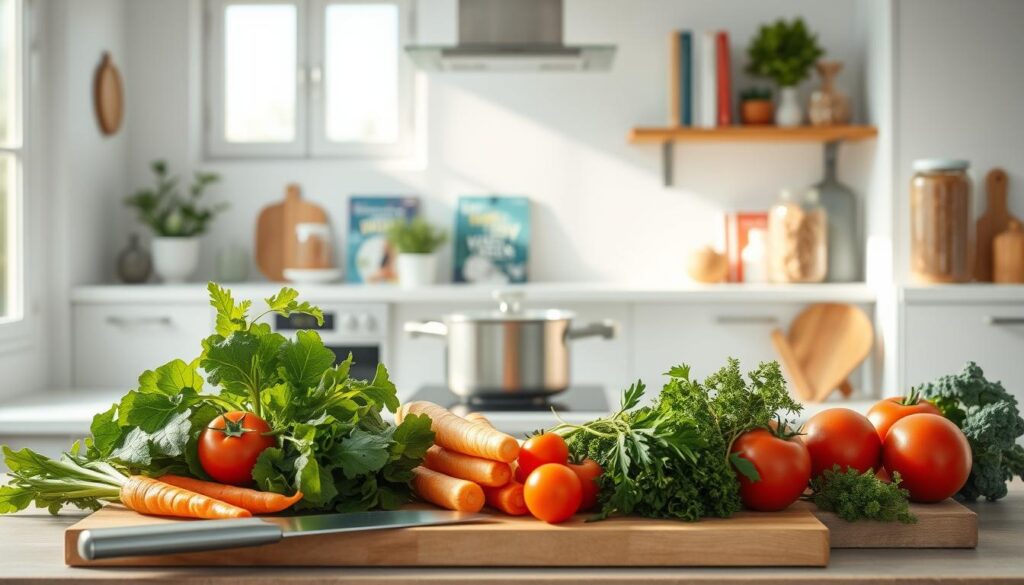
Simple cooking tips can make your meals healthier and tastier. Use fresh, unprocessed ingredients to get more nutrients. Organic fruits and veggies are best for extra health benefits.
Cooking with skin on fruits and veggies is smart. The skin has lots of vitamins and fiber. Try steaming and sautéing to keep nutrients and flavors alive.
Don’t throw away leftovers. Turn them into new dishes like soups or salads. This saves time and reduces waste, adding to your nutrition.
Follow these tips to make your meals better for you. Small changes can make a big difference in your health and taste.
Nutrient-Dense Recipes for Wholesome Meals
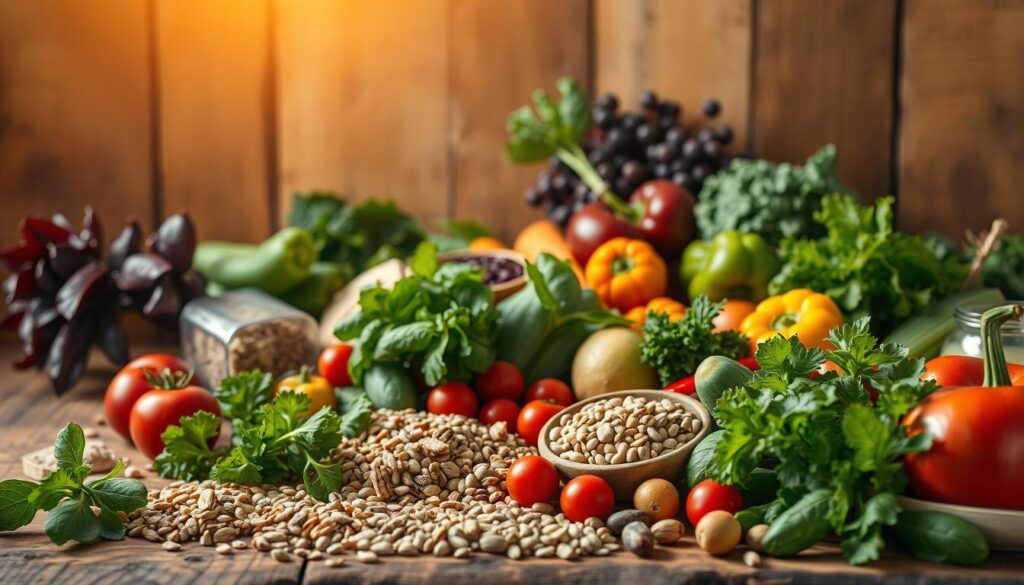
Looking for recipes that make your meals full of energy? Whole foods are key in these healthy dishes. Adding colorful veggies, lean proteins, and good fats makes cooking fun and healthy.
The Vegan Buddha Bowl is a feast for your taste buds and eyes. It mixes quinoa, greens, roasted veggies, and tahini dressing. This mix is not only tasty but also packed with vitamins and minerals.
Keto Salmon with Asparagus is another great choice. It combines salmon, full of omega-3s, with asparagus. This dish is low in carbs but full of nutrients.
Grain salads are also great for sides or light meals. They have farro, black beans, herbs, and a tangy dressing. These salads show how easy it is to make healthy food that’s also delicious.
Balanced Diet Planning
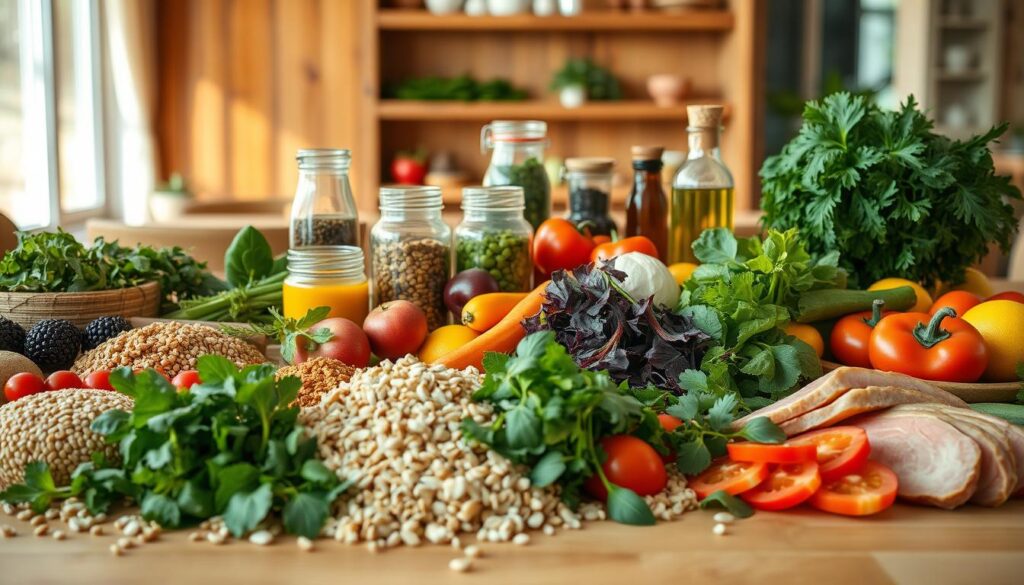
Planning meals for a balanced diet is key for long-term health. It meets your nutritional needs and makes shopping and cooking easier. Start by mixing different food groups in your meals. This ensures you get all the nutrients you need.
- Portion Control: Learn how to pick the right serving sizes to avoid eating too much.
- Nutrient Variety: Add fruits, veggies, whole grains, lean proteins, and healthy fats to your meals.
- Weekly Prep: Set aside time each week to cook meals ahead. This helps you stay on track with your diet.
- Simplicity: Choose simple and quick recipes. This keeps your cooking routine healthy and enjoyable.
Using these tips, you can make a diet plan that lasts. A good plan improves your health and makes meals that are good for you and tasty.
Cooking for Wellness in Everyday Life
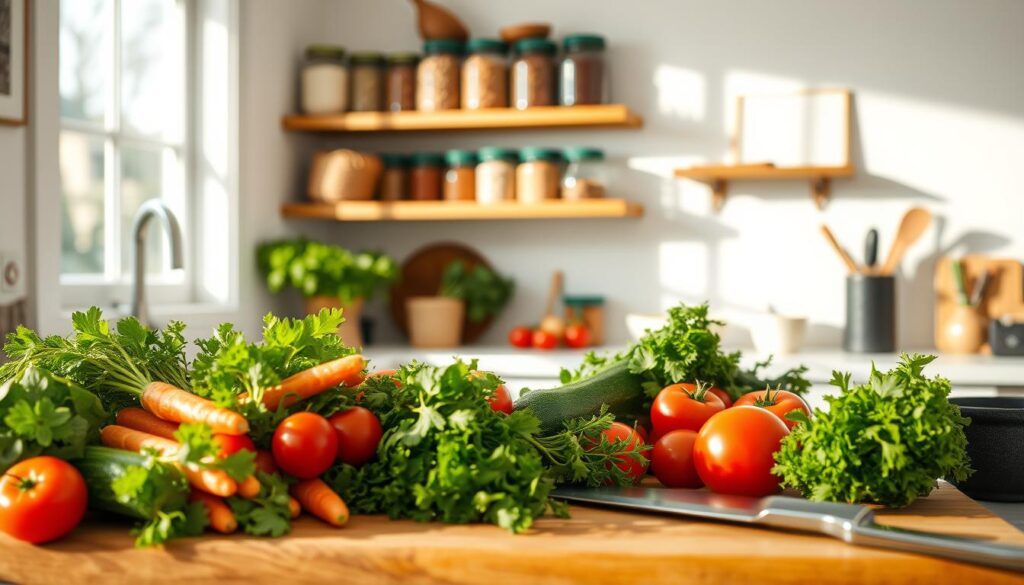
Cooking for wellness makes healthy choices easy in your daily life. Simple steps can turn your kitchen into a place for good food. Use fresh herbs and spices to make meals tasty and healthy.
Batch cooking is great for having healthy food ready. Cooking meals in advance stops you from eating junk. Choose foods like whole grains, lean proteins, and lots of veggies. This makes your diet better and saves time.
Plan your meals for the week to stay on track. This helps with shopping and cooking. Trying new recipes makes meals fun and helps you learn more about cooking.
When cooking for wellness becomes a habit, it’s easier to keep it up. Making healthy meals not only feeds your body but also makes you happy. See cooking as a way to improve your health and happiness.
The Science Behind Cooking and Nutrient Preservation

Learning about cooking science is key to keeping nutrients in your food. By picking the right cooking ways, you can boost your meal’s optimizing nutritional value. Different cooking methods change how your body can use vitamins and minerals.
Cooking veggies can make nutrients easier to get. But, too much heat or cooking for too long can lose important vitamins. Try steaming or sautéing instead of boiling to keep nutrients safe.
Here are some cooking techniques for maximum nutrients you can try:
- Steaming: This method keeps water-soluble vitamins and keeps veggies crisp.
- Vacuum sealing: It stops oxidation, keeping food fresh and full of nutrients.
- Quick sautéing: Using a little oil and high heat adds flavor without losing nutrients.
Trying these methods helps you choose better for your health. Knowing how heat affects fiber and the benefits of different cooking styles makes your meals healthier.
Thinking about cooking for nutrition shows how important it is to choose the right ingredients and cooking methods. This helps you make meals that are tasty and good for your body.
Using healthy cooking tips can make your meals better. Methods like steaming, sautéing, and roasting keep nutrients in your food. They also make your food taste great. This makes eating healthy a fun part of your day.
Cooking for health is more than just recipes. It’s a way of life. By being creative and knowing how to keep nutrients in your food, you can make meals that are good for you. So, go into the kitchen with confidence. Try new things and make healthy eating a part of your life.
FAQ
What are some healthy cooking methods that preserve nutrients?
How can I maximize the nutritional value of my meals?
Why are fresh ingredients important for nutrition?
What are some tips for meal planning a balanced diet?
How does cooking affect the nutrients in food?
What are nutrient-dense foods?
How can herbs and spices enhance the nutritional value of my dishes?
What is the best way to retain nutrients while cooking?
Written by lana saleh
Leave a Reply Cancel reply
You must be logged in to post a comment.
Best offers
Join Risk Free
Subscribe Now
100% Safe
Secure Shopping
24x7 Support
Online 24 hours
Best Offers
Grab Now
Free Shiping
On all order over
Know Us

Your go-to online destination for inspiration, guidance, and resources across various aspects of daily living, covering topics like wellness, style, home, relationships, personal development, and more, all aimed at helping you cultivate a fulfilling and intentional life
Read MoreRecent Posts
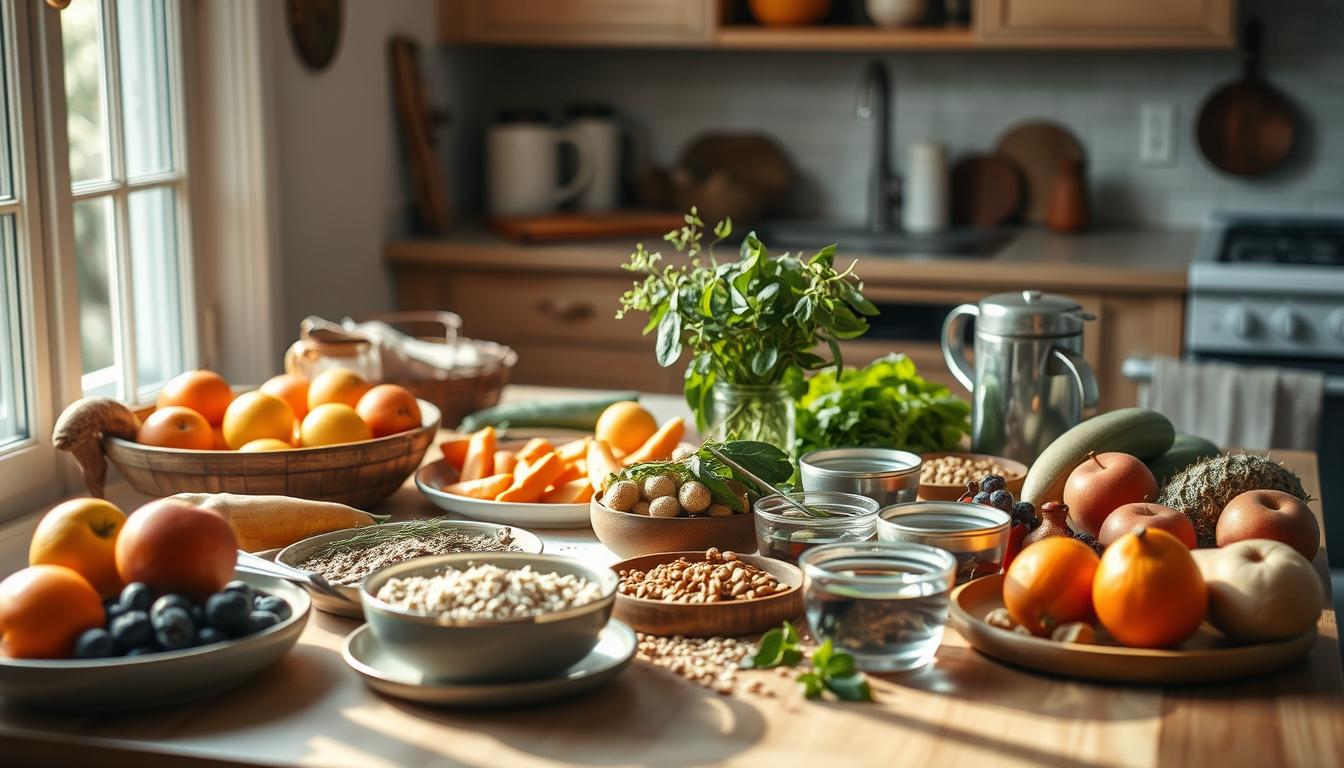
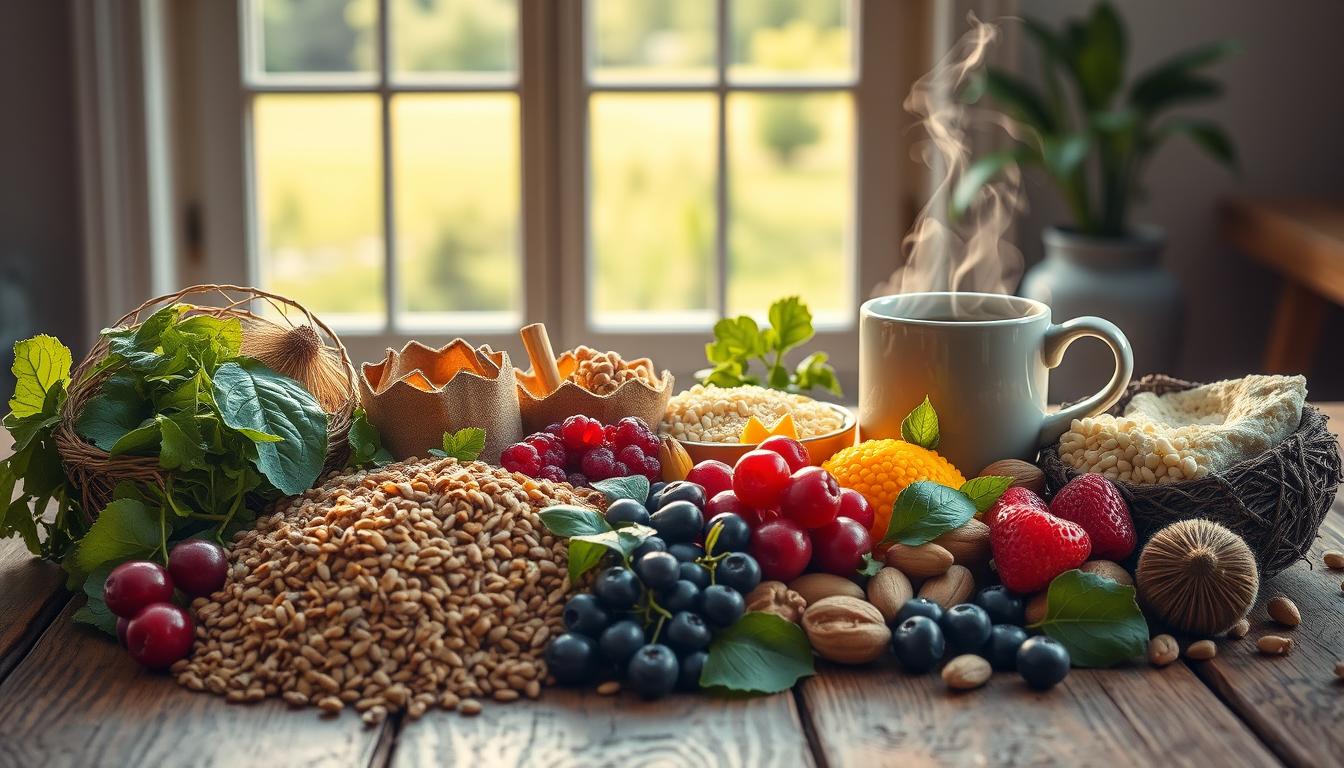



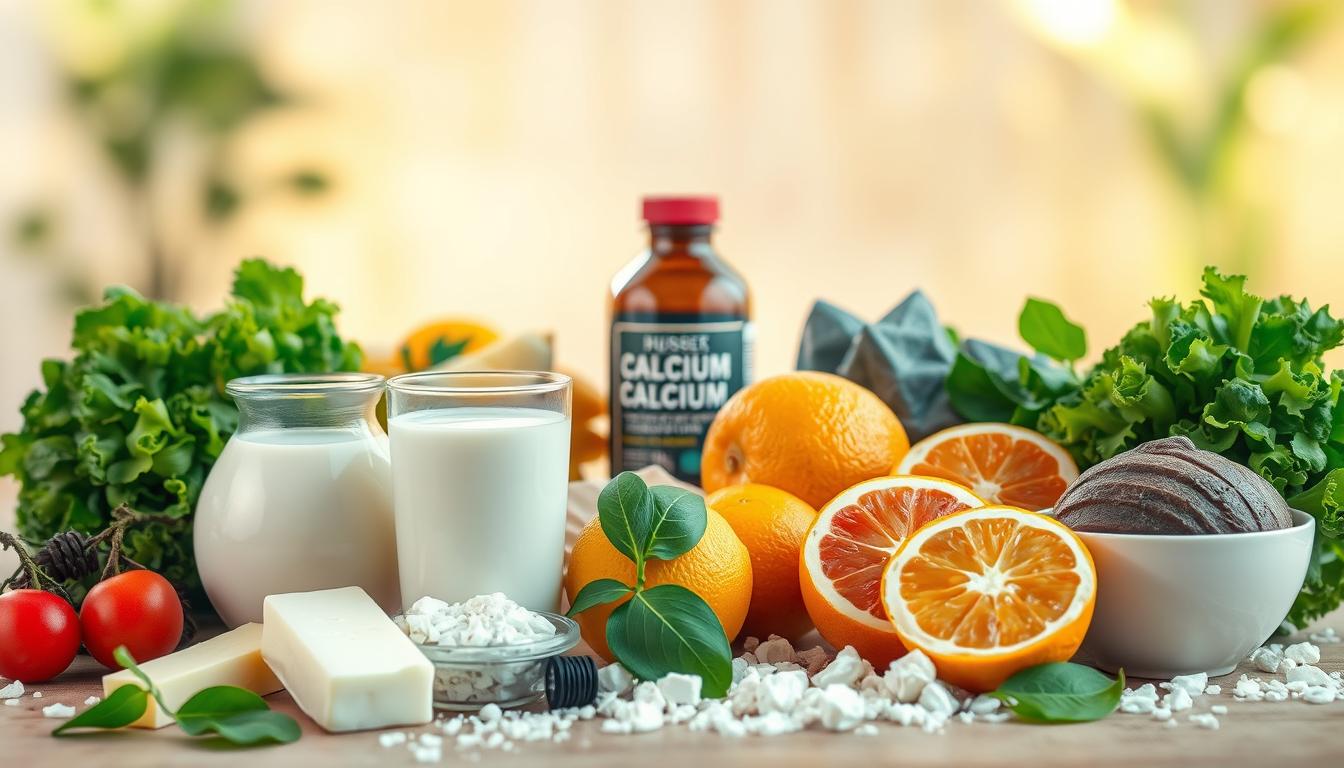
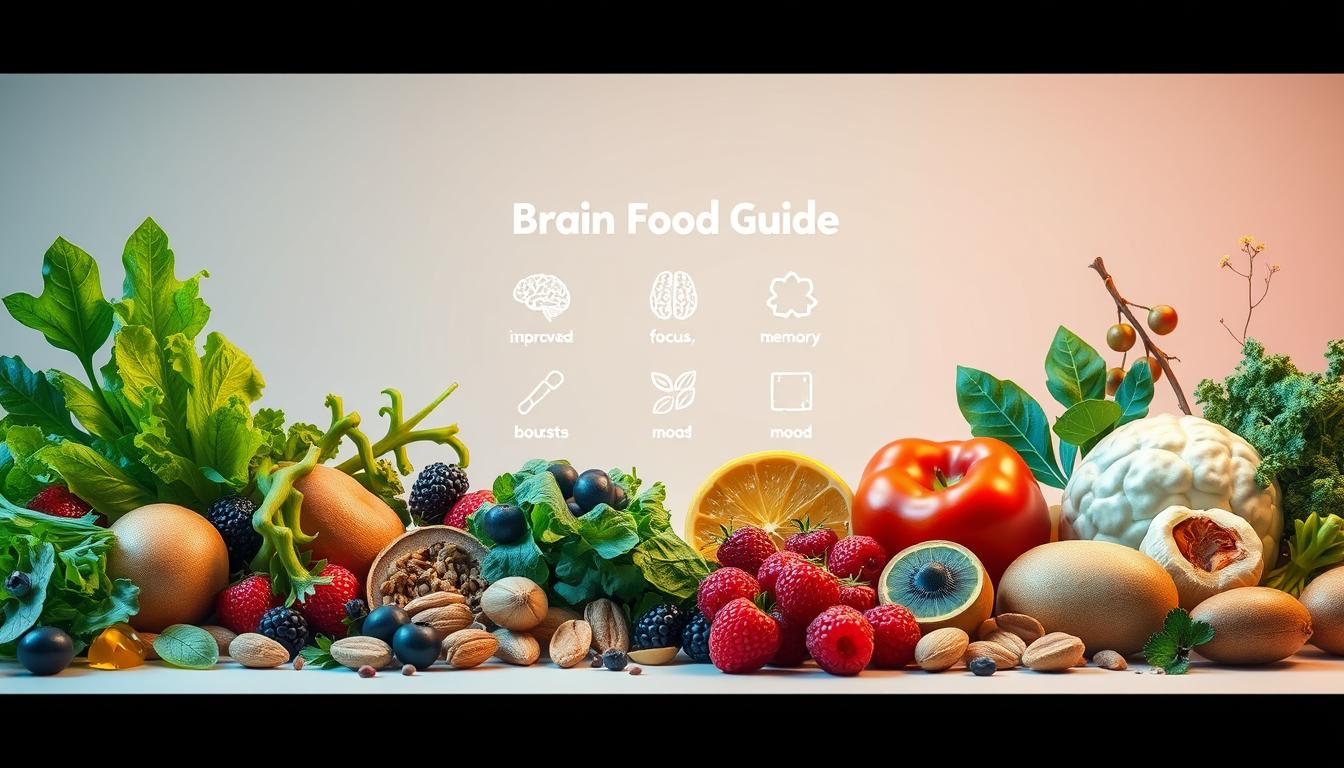
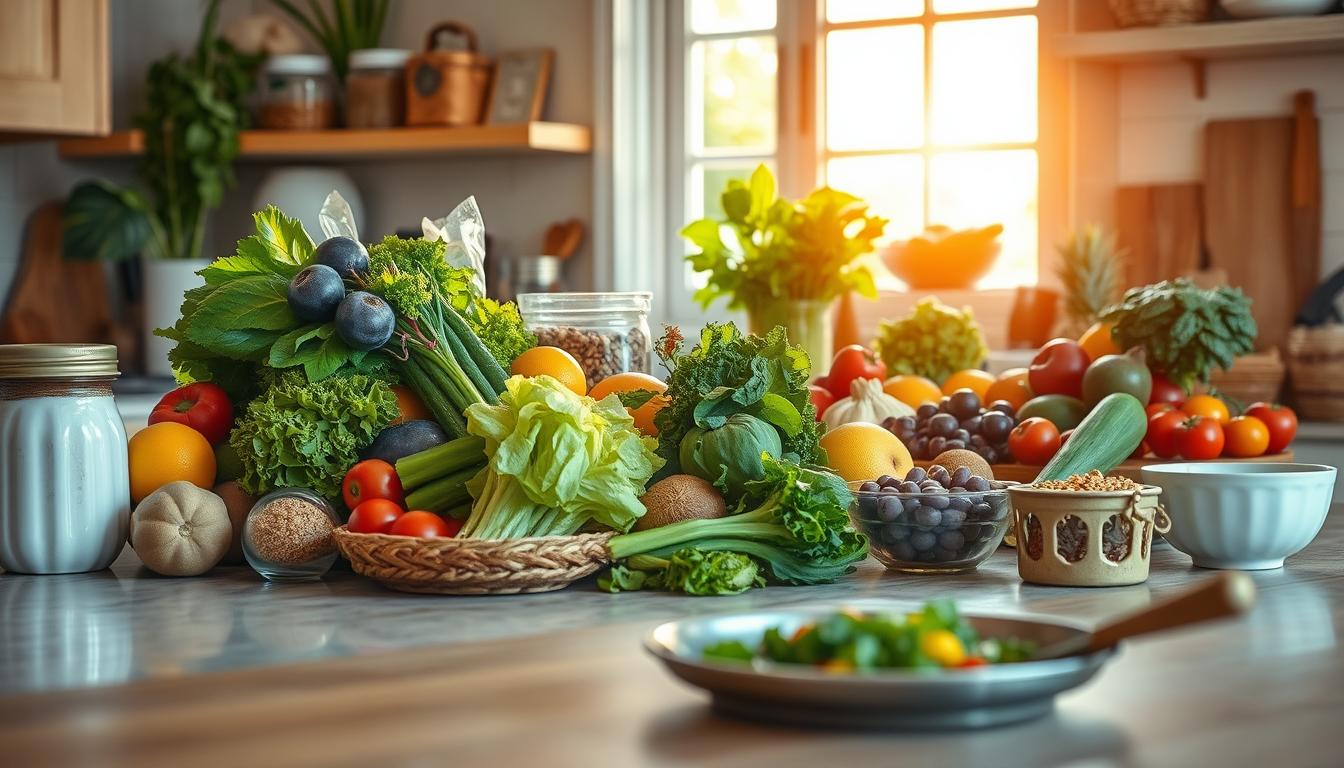
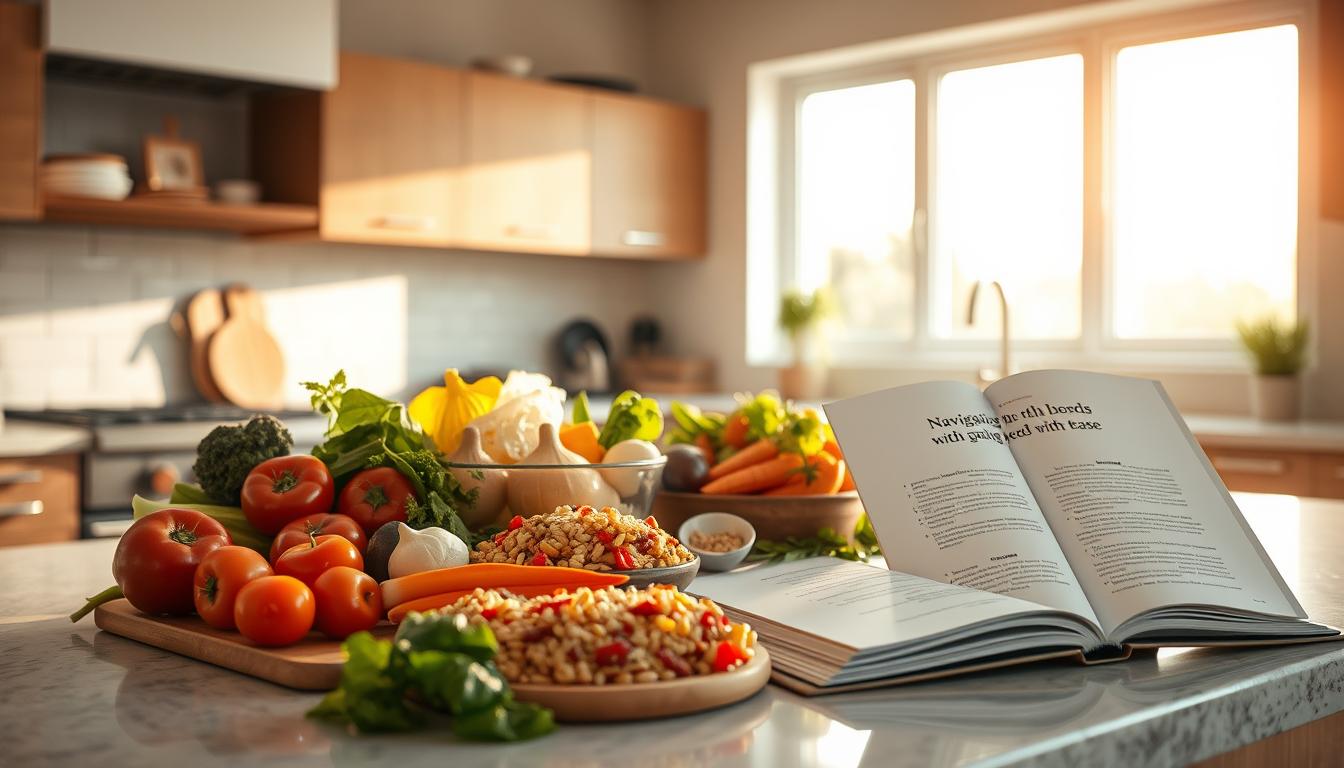

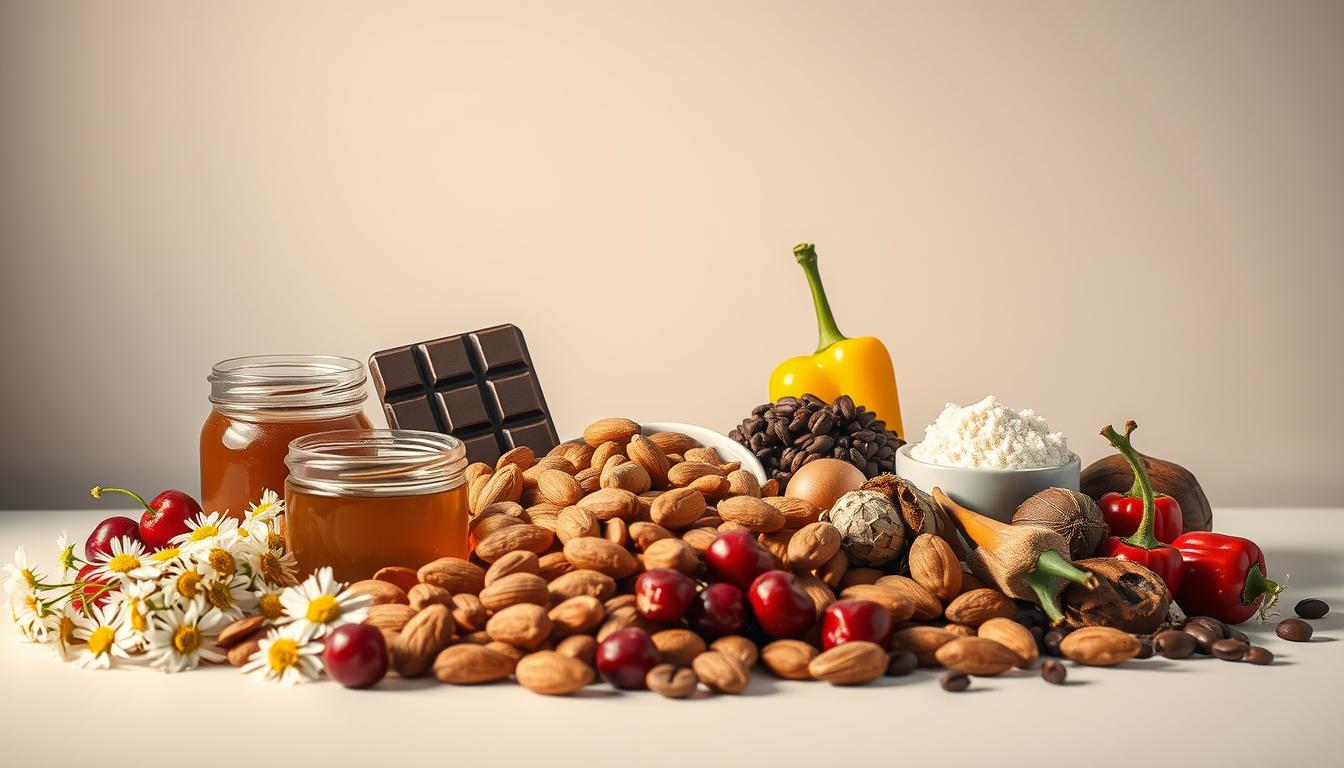


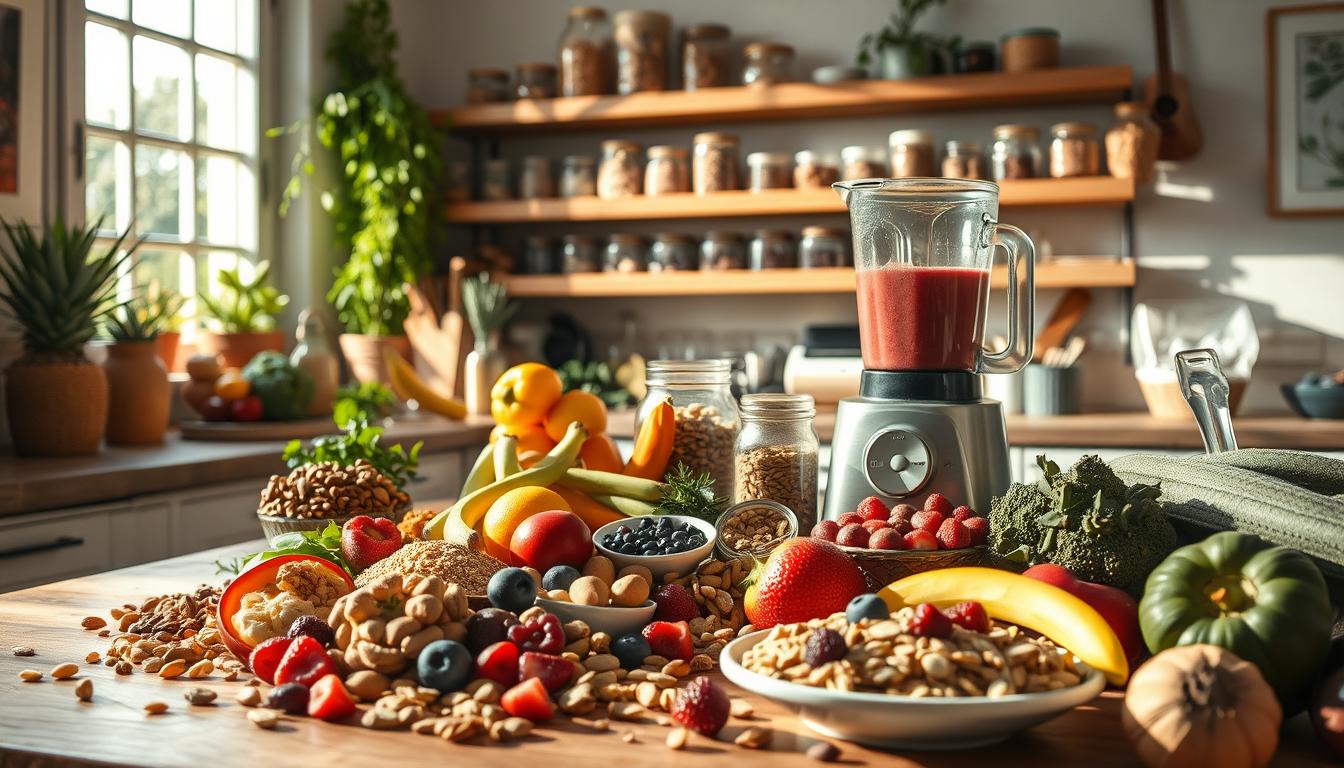



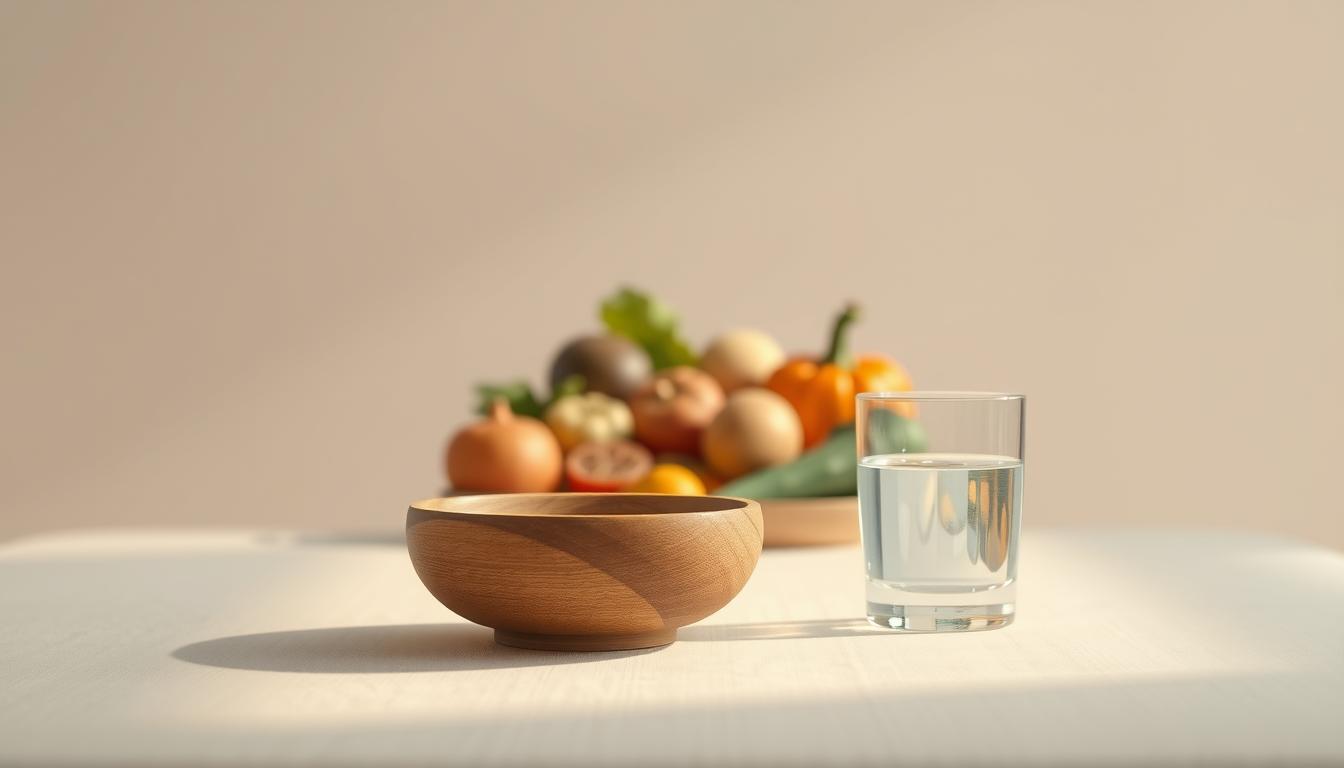

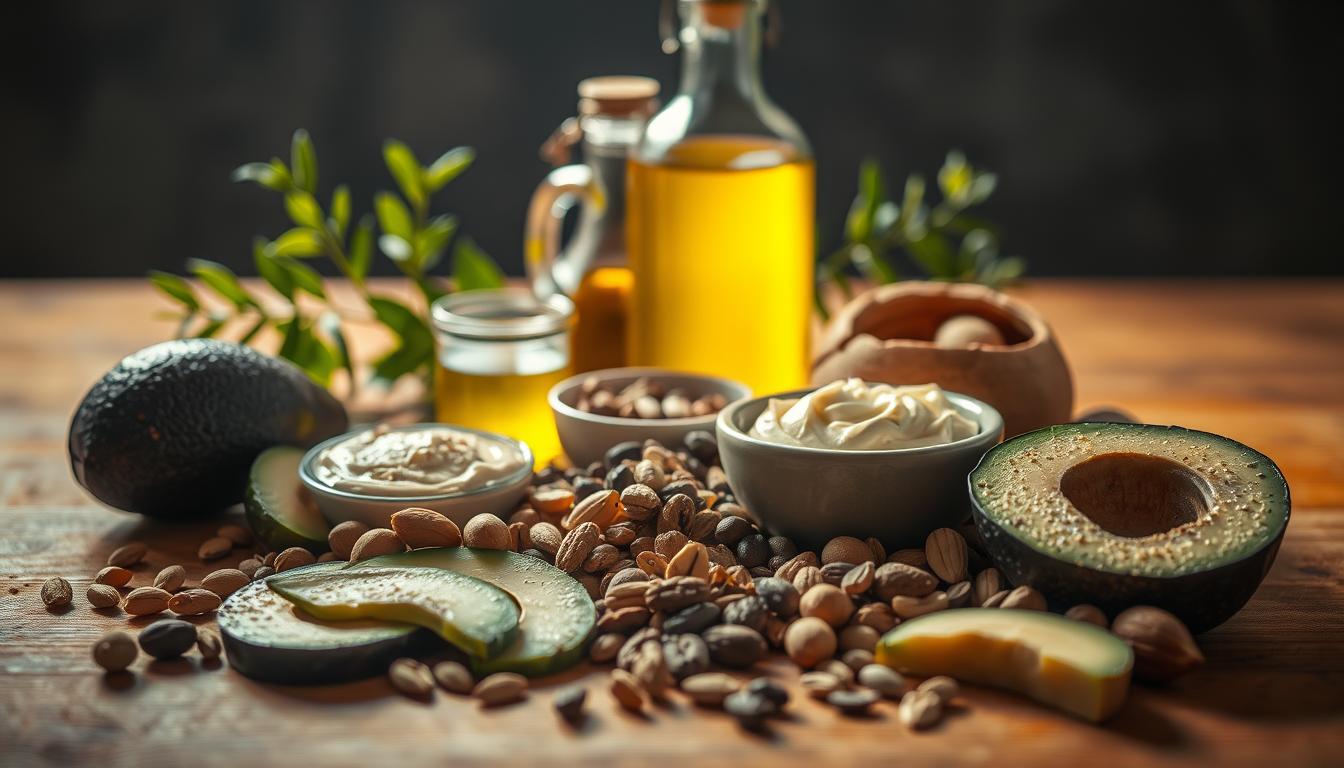

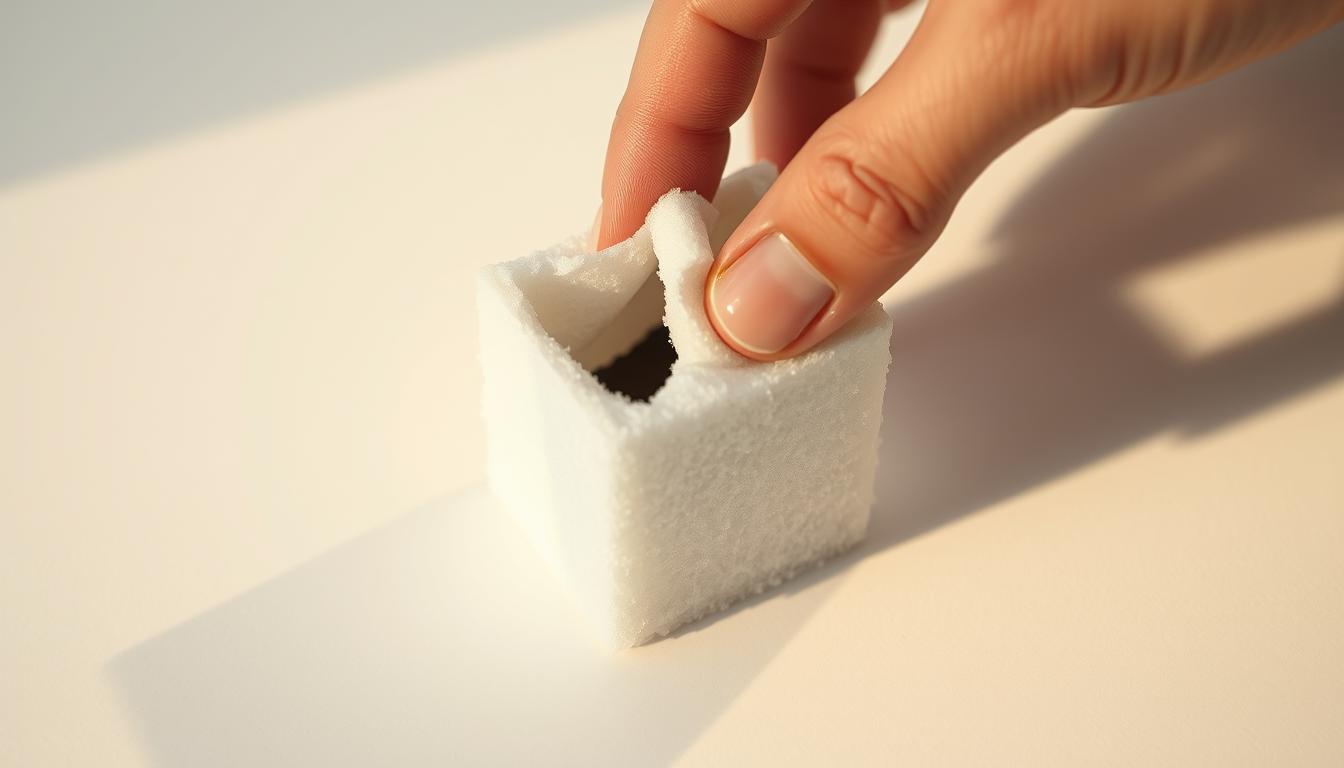
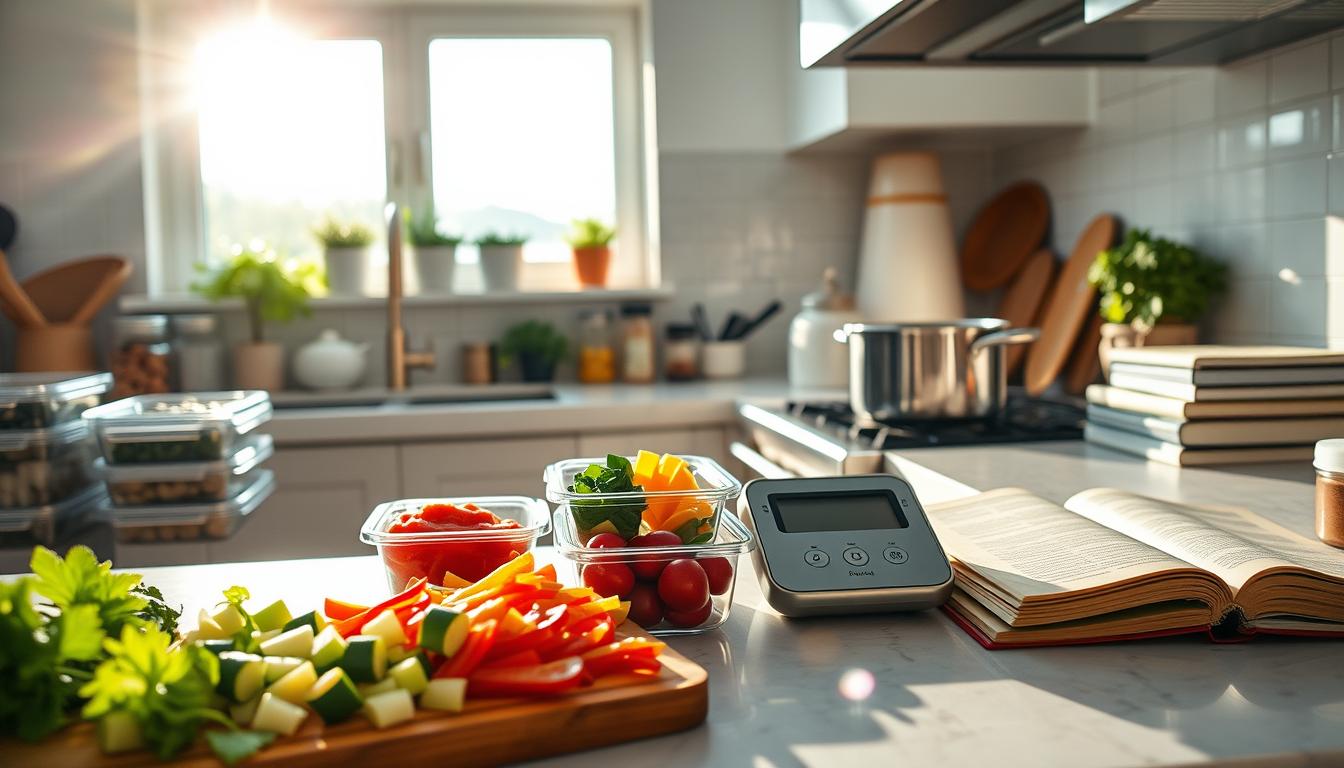

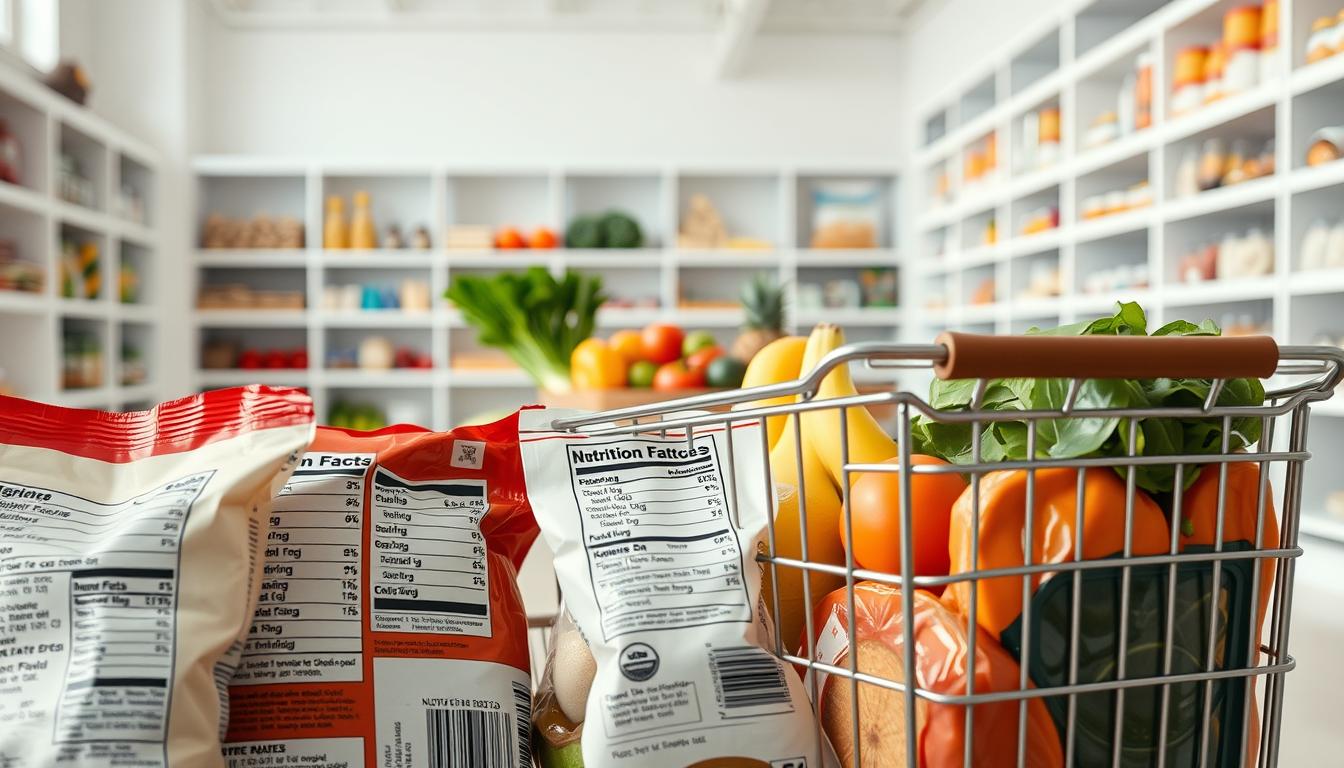
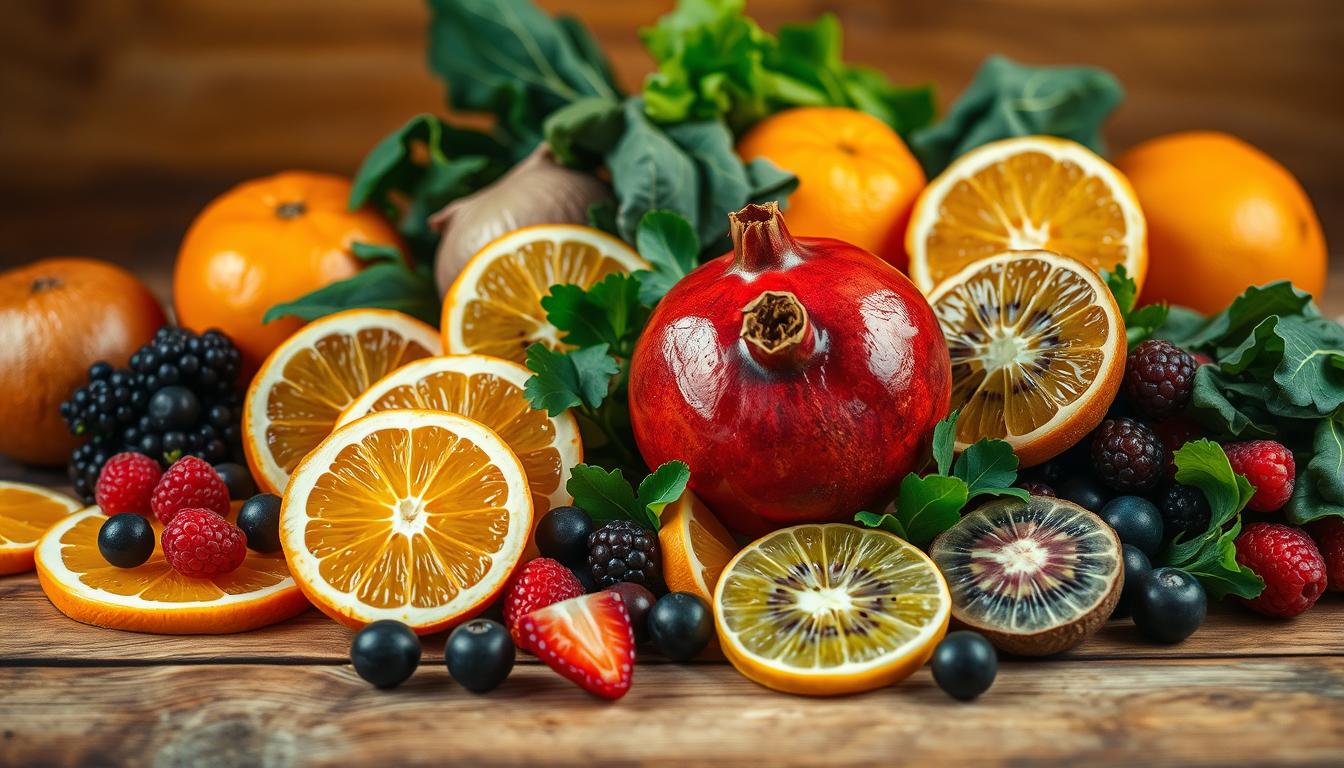
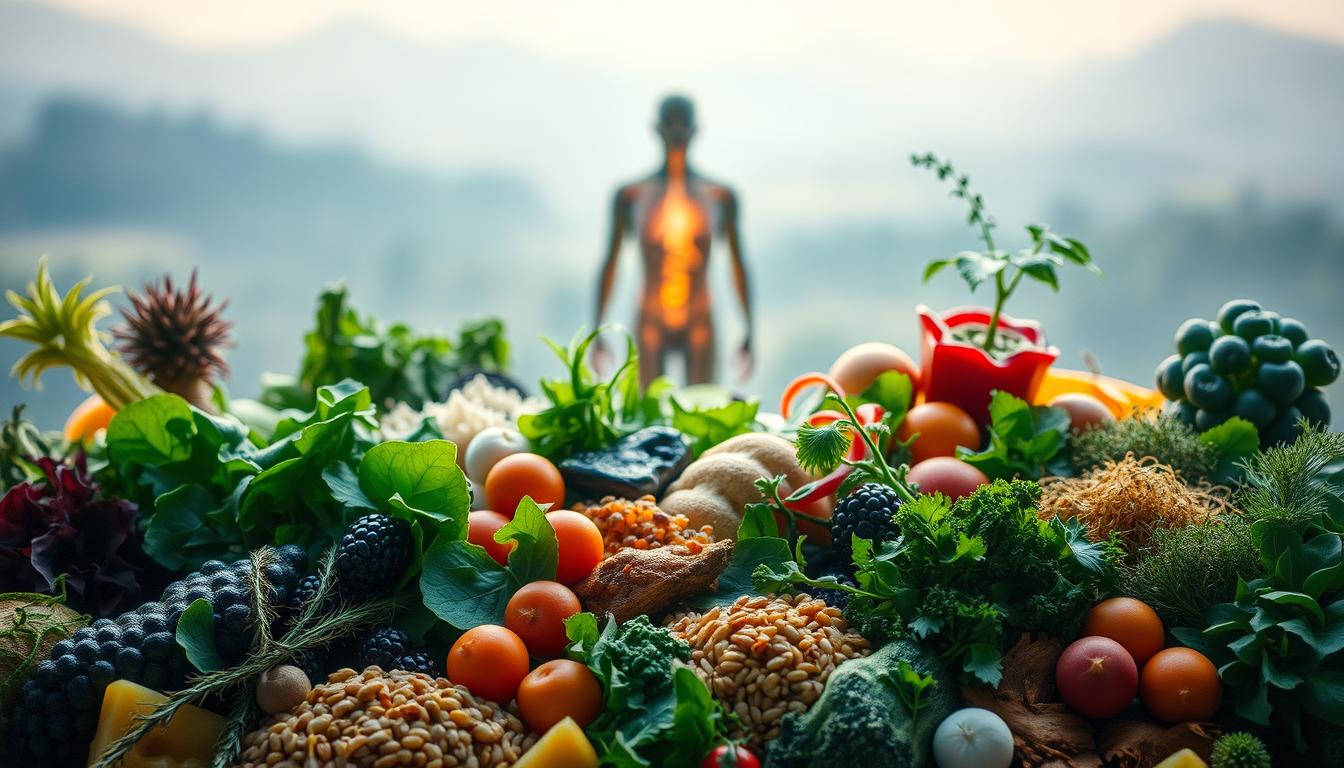















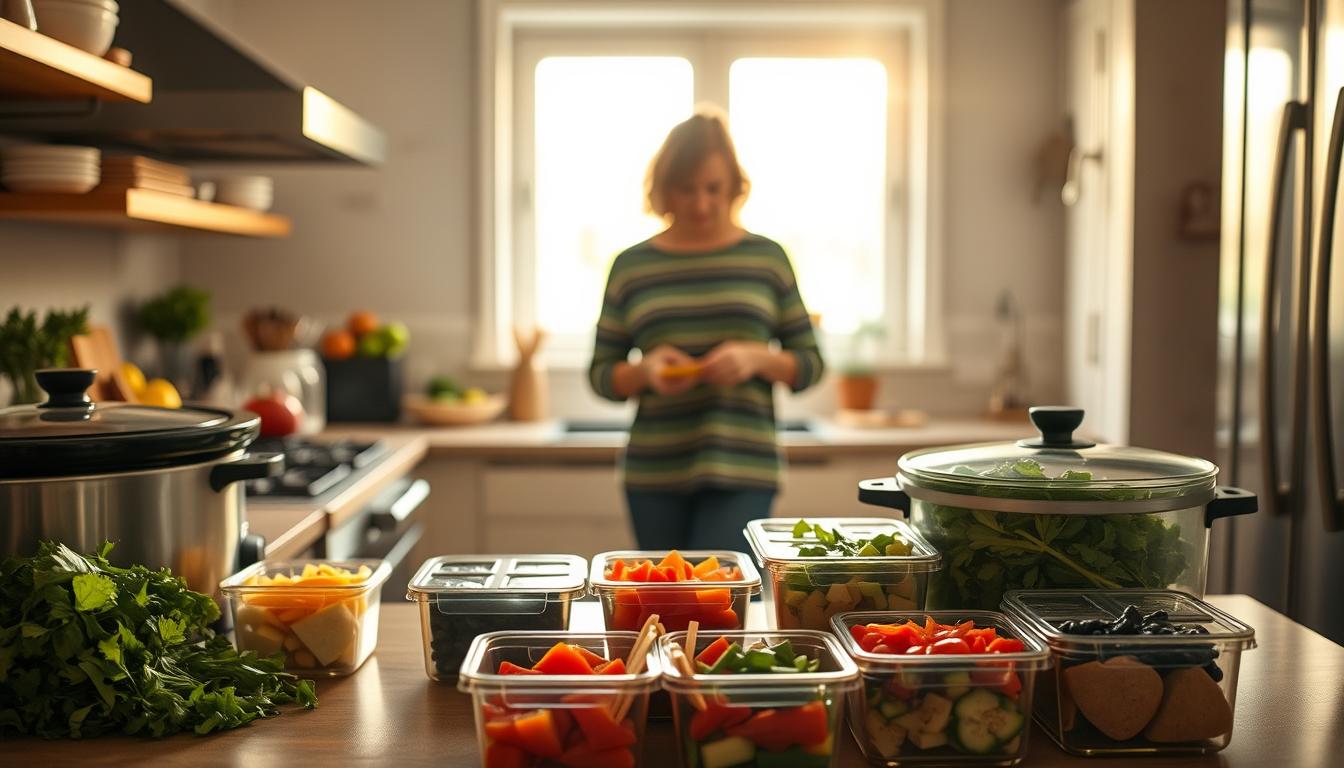
Product Showcase







